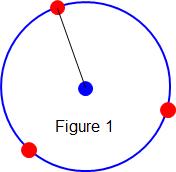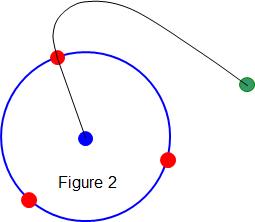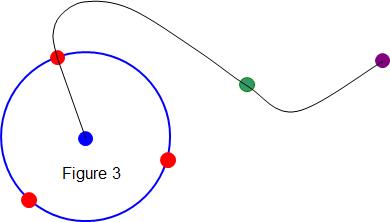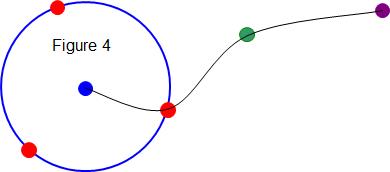Figures 1, 2 and 3 represent “Serial Thinking”
, i.e. solely focused on the next step. Figure 4 represents “Anticipatory Thinking”, i.e. thinking ahead at where you want to head, the goal, the end game, as a guide as to how to approach the next steps.
Anticipatory Thinking over a plan horizon
, yields lower costs, shorter time, less re-work, and higher chances of hitting the mark. Many people will automatically use Anticipatory Thinking if they have the knowledge of what is needed next. You can easily observe this with an overly simple example. You need gas in the car. So you go to the gas station, and then return home. You now observe that you need bread. So you go to the grocery store, and then return home. Or instead, when you were about to leave to get gas, you asked yourself what else you needed. You make one trip and get both items. More efficient, less time, and less costly. Imagine the difference you can make to your development team if you give them an idea of what follows beyond what they are currently working on.
Serial Thinking has its place.
Serial thinking can be the fastest, most direct way to get to a next step. It’s the shortest distance between two points. This kind of thinking is often exhibited in a triage situation, life or death, out of cash, fiber cut, power outage, server crash, etc. The focus is “fix it, do it, address a problem … NOW!, we’ll pick up the pieces later”. Serial thinking is not only used in an emergency or an impulse. In exploratory efforts, like market research, you may not want to anticipate what’s next, but decide on a course of action only after you look at the unbiased research.
Isn’t “Planning” Anticipatory Thinking?
Yes, it is. Planning is a deliberate state of Anticipatory Thinking with respect to a particular initiative. Anticipatory Thinking however includes many aspects of day-to-day decisions without the formality of “planning”. Anticipatory thinking is more “automatic” based on having the knowledge of what is next.
The Takeaway: As a manager, you give instructions, orders, and requests of your people all the time. As a leader, are you also giving the direction, the vision, the goal, the purpose?. Are you just giving people the “Next Dot” to go to, or are you giving them insights as to what some of the other “Dots” might look like. Similarly, ask yourself and others “what’s next after that” to provoke Anticipatory Thinking. A larger view of things to come will yield more creative and economical solutions that will produce more positive outcomes.



